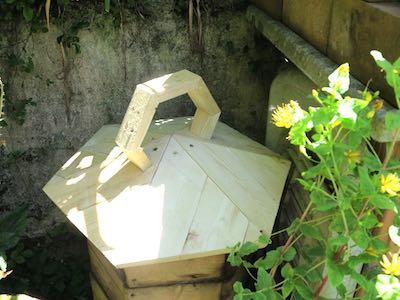





Most wooden composts have a square shape. But for the same quantity of wood, a hexagonal compost has a bigger surface than a square one.
If the available wood pieces have a limited length l, a much bigger hexagonal compost can be built.


The hexagon is much bigger for a given side length, but it also uses more wood.
If the available quantity of wood q is limited, for the same perimeter, the hexagon has a bigger area than the square. Let h be the sidelength of the hexagon and c the one of the square:
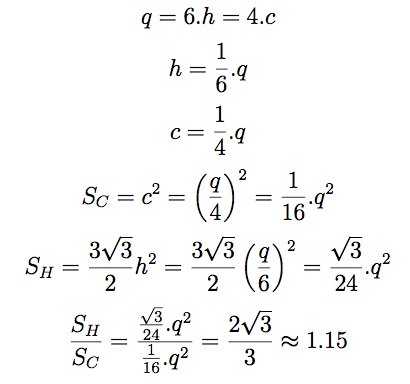
For the same quantity of wood, the surface of a hexagon is 15% bigger than the one of a square.
Here is a first compost made of pallet pieces. To empty it, unscrew bottom planks.
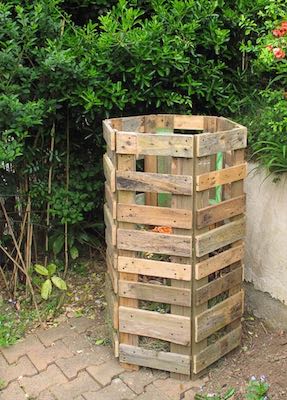
This compost is made of piled-up pieces like a log-cabin. All pieces are identical.
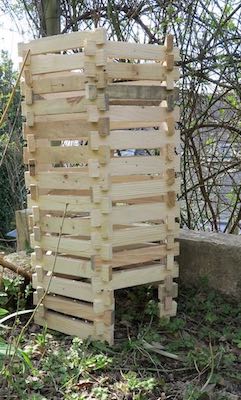
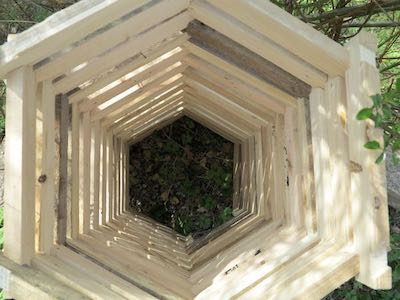
To empty this compost easily, it is made of 4 piled-up cases. When top case is full, the bottom one is emptied and put back on top. All others move down one stage.
Each case is closed by a grid at the bottom to let earthworms through.
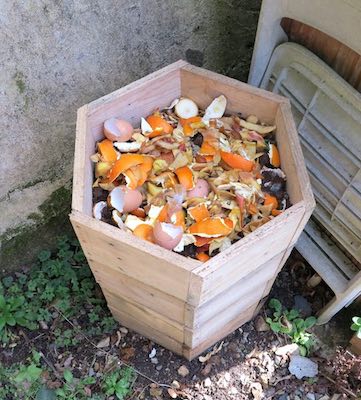
This compost is closed by a lid to avoid birds eating earthworms and to protect it from rain.
